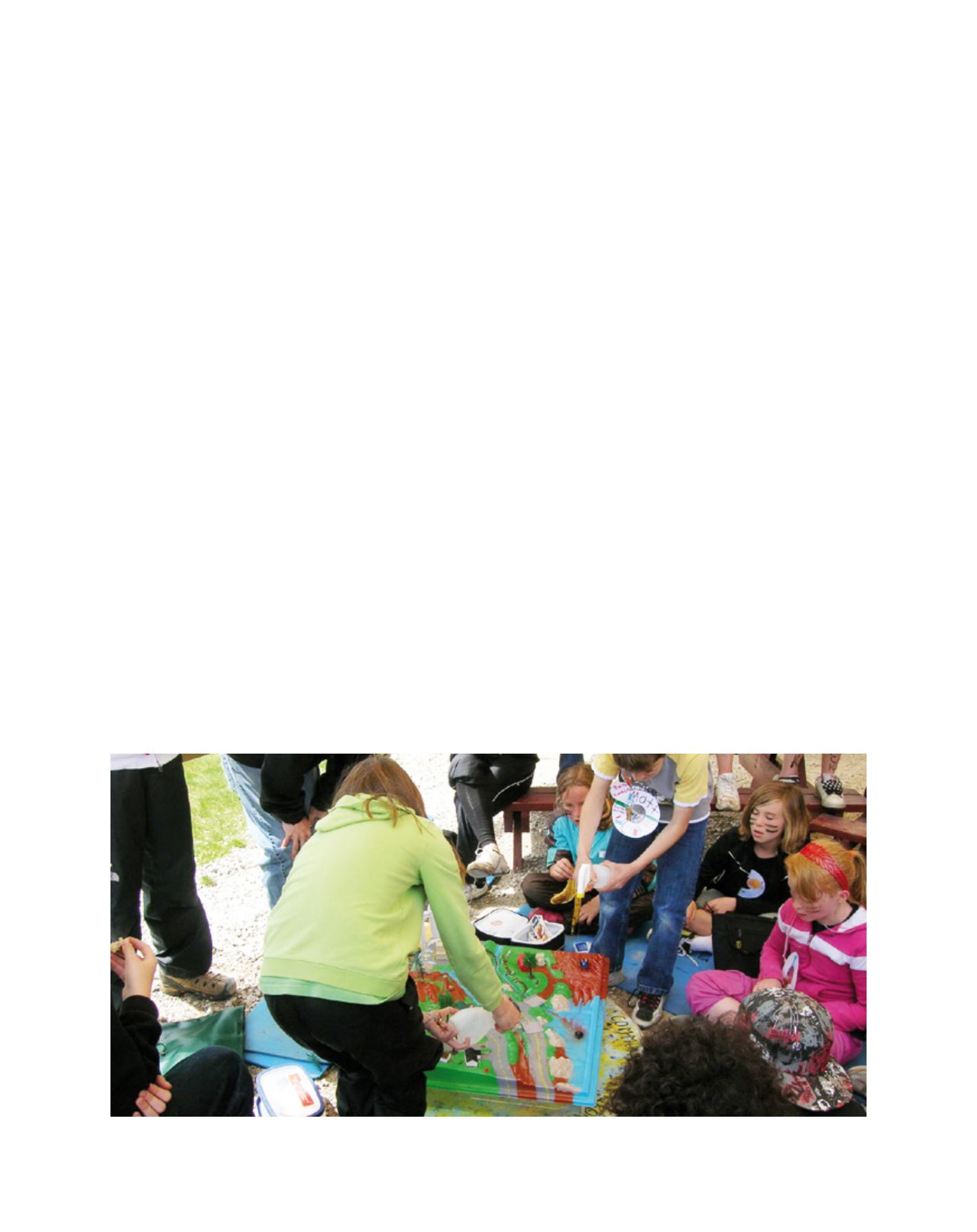

[
] 81
• Postsecondary institutions are undertaking
research in sustainable development and ESD. York
University (Canada) is designated as the UNESCO
Chair in Reorienting Teacher Education towards
Sustainability. There are two other universities
with UNESCO chairs that focus on education
sustainability and ESD.
The CMEC pan-Canadian ESD framework for collabo-
ration and action, released in the fall of 2010, seeks to
ensure that there is a coordinated approach on educa-
tion for sustainable development at the K-12 level. The
framework sets out the actions the CMEC will take in
support of the DESD. It is not a substitute for initiatives
already underway within each province and territory,
but rather it is intended to build on what jurisdictions
are already doing, while enabling further information
sharing, collaboration and monitoring of progress. The
framework is focused on four priority areas.
Priority 1: infusing ESD competencies into the
provincial or territorial curricula
CMEC believes every K-12 student in Canada, regard-
less of grade level and course selection, should develop
and use skills to acquire knowledge, to adapt behaviour
and to take action to ensure a sustainable future. ESD
competencies (knowledge, skills, attitudes and values)
are the means by which students can gain a deeper
understanding of their own and others’ diverse perspec-
tives on sustainability issues.
Efforts have been made across Canada to integrate ESD
into curricula, policies and legislation targeting primary
and secondary education. The provinces and territories
have introduced the concept of sustainable development
in the curriculum as essential elements of core courses, as
ten provinces and three territories – departments or ministries of
education are responsible for the organization, delivery and assess-
ment of education at the elementary and secondary levels. The
institutions in the post-secondary system have varying degrees of
autonomy from provincial or territorial government control.
In 2008, the CMEC included ESD as one of the key activity areas
in Learn Canada 2020, its framework to enhance Canada’s education
systems, learning opportunities and overall education outcomes at all
levels. The goal for ESD is to raise students’ awareness and encourage
them to become actively engaged in working for a sustainable society.
To achieve this goal, a CMEC ESD working group was created in 2008
to coordinate action to support and strengthen the implementation of
ESD in all provinces and territories, and to develop a pan-Canadian
ESD framework for collaboration and action that builds on current
activities for enhanced collaboration at the jurisdictional level.
The DESD has had a considerable impact on education at all levels
in the provinces and territories of Canada, and a large number of
partners have joined efforts to make ESD a reality. Since the Earth
Summit in 1992, these efforts have built on many initiatives to create
a culture of sustainability through education. For example:
• As a community of environmental educators and
communicators, the Canadian Network for Environmental
Education and Communication has continued to play a
fundamental role in building capacity for environmental learning
and Learning for a Sustainable Future, and is working with other
organizations to lead the Canadian response to the UN DESD
through the implementation of a series of initiatives, including
coordinating ESD Canada
• The Canadian Commission for UNESCO plays a pivotal role
in ESD through extensive collaboration and consultations on
the issue with government, non-governmental organizations
(NGO’s) and civil society
• Regional Centers for Expertise in Canada work towards achiev-
ing the UN DESD by translating its global objectives into the
context of local or regional communities
Grade 10 students from Norwell Secondary School in Ontario undertake peer mentoring with Grade 5 students about water sustainability issues
Image: Learning for a Sustainable Future’s Project FLOW
















